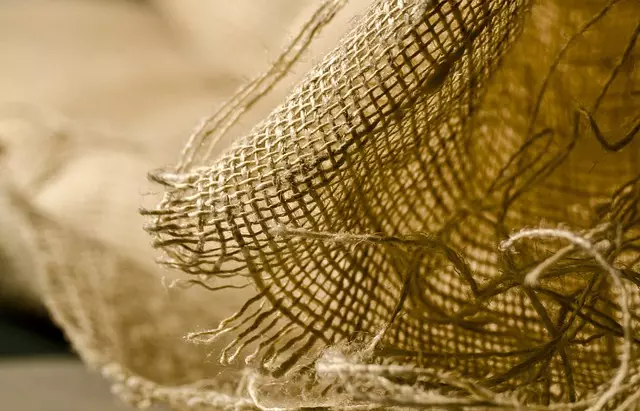Muscle soreness from exercise or overuse can be alleviated through natural remedies like kratom, a plant native to Southeast Asia. Kratom is known for its analgesic and energizing properties due to its primary alkaloids, mitragynine and 7-hydroxymitragynine, which engage with opioid receptors in the brain to relieve pain. Consuming kratom through drinks with kratom in them is a convenient way to potentially benefit from its effects without sedation, as it also interacts with neurotransmitter systems like serotonin and norepinephrine for improved well-being. Users can tailor their experience by selecting different strains and dosages of kratom, but it's important to use it responsibly and adhere to recommended amounts while being aware of potential interactions and consulting healthcare professionals. The efficacy and safety of kratom are under scientific examination, making it crucial for consumers to procure high-quality products from reputable sources and to start with a low dosage to assess their body's response. This approach to muscle recovery with kratom-infused drinks should be done with caution and professional guidance to ensure safe and effective use.
Muscle soreness, a common consequence of intense physical activity, can hinder recovery and diminish performance. Seeking effective relief without resorting to conventional medications has led many to explore natural alternatives. Kratom, a tropical plant with a rich history of use in Southeast Asia, has emerged as a potential remedy due to its active alkaloids. This article delves into the interplay between muscle soreness and kratom’s therapeutic properties, elucidating the science behind its effects on muscle recovery. Additionally, it guides readers on how to craft their own kratom-infused drinks, offering a practical approach to alleviating discomfort. Discover how kratom can be integrated into your wellness routine for natural and effective muscle soreness relief.
- Understanding Muscle Soreness and Kratom's Role in Relief
- The Science Behind Kratom and Its Impact on Muscle Recovery
- Crafting Your Own Kratom-Infused Drinks for Muscle Soreness Alleviation
Understanding Muscle Soreness and Kratom's Role in Relief

Muscle soreness can manifest as a result of intense physical activity, overuse of certain muscles, or even from age-related changes in muscle function. The sensation, ranging from mild tenderness to severe pain, often arises when the body experiences microtears in muscle fibers during exercise. This inflammatory response is a natural part of the muscle recovery process but can be uncomfortable and sometimes debilitating. In this context, consumers have turned to kratom, a tropical evergreen tree native to Southeast Asia, whose leaves have been traditionally used for pain relief and energy enhancement. Recent interest in kratom as an alternative remedy has led to its inclusion in various drinks with kratom in them, offering a potentially effective natural solution for muscle soreness relief. Mitragynine and 7-hydroxymitragynine, the two primary alkaloids found in kratom leaves, are thought to interact with the opioid receptors in the brain, providing analgesic effects that may help alleviate discomfort associated with muscle soreness. While the scientific community continues to study its efficacy and safety, many individuals report positive outcomes when incorporating these kratom-infused beverages into their post-exercise routines, suggesting a potential role in supporting muscle health and promoting recovery. As with any supplement, it is crucial to understand the recommended dosage, potential interactions, and to consult with healthcare professionals before integrating kratom into one’s regimen for muscle soreness relief.
The Science Behind Kratom and Its Impact on Muscle Recovery

Kratom, a tropical evergreen tree native to Southeast Asia, has been traditionally used for its medicinal properties, including pain relief and energy enhancement. The science behind kratom’s efficacy in muscle recovery is rooted in its interaction with the brain’s opioid receptors. Mitragynine and 7-hydroxymitragynine, two of its primary alkaloids, are believed to influence these receptors, providing relief from pain without the sedative effects typically associated with opioids. This selective activity can be particularly beneficial for athletes or individuals experiencing muscle soreness post-exercise, as it may help manage discomfort without impairing cognitive or physical function. Additionally, kratom is known to influence neurotransmitter systems like serotonin and norepinephrine, which can further contribute to the alleviation of pain and promote a sense of well-being conducive to recovery.
Incorporating kratom into drinks with kratom in it offers a practical and palatable way to harness its benefits for muscle recovery. The beverage form allows for precise dosing and easier integration into daily routines, making it an accessible option for those seeking natural pain relief and accelerated muscle recovery. Consumers often report that consuming kratom in drinkable formats helps them manage acute and chronic muscle soreness, with effects that can vary depending on the strain and dosage used. It’s important to approach the use of kratom-based drinks responsibly, adhering to appropriate dosages and considering individual sensitivity, as well as consulting with healthcare professionals when integrating these beverages into an existing health regimen.
Crafting Your Own Kratom-Infused Drinks for Muscle Soreness Alleviation

Crafting your own kratom-infused beverages can serve as an effective remedy for muscle soreness. Kratom, a tropical evergreen tree native to Southeast Asia, contains alkaloids that are believed to interact with opioid receptors in the brain, potentially offering pain relief. When experiencing muscle soreness, consider brewing a kratom tea or blending kratom into a smoothie. For a soothing cup of kratom tea, steep kratom leaves or finely ground powder in hot water for about 15-20 minutes. The resulting liquid can be flavored with lemon, honey, or ginger to enhance its taste and complement the natural properties of kratom. Alternatively, integrating kratom into a post-workout smoothie by adding it to a blend of your favorite fruits like banana or berries, along with a protein supplement, can provide a refreshing and nutritious way to address muscle discomfort. The key is to start with a low dosage and monitor how your body reacts before adjusting the amount to suit your individual needs for relief from muscle soreness. Always ensure that you are sourcing high-quality kratom from reputable vendors to maintain safety and efficacy, as the purity and potency of kratom can vary widely among different products.
Muscle soreness can be a significant impediment to maintaining an active lifestyle, but understanding its mechanisms and employing natural remedies like kratom can offer effective relief. The article has explored the scientific basis for how kratom interacts with the body to aid in muscle recovery and provided practical guidance on creating your own kratom-infused beverages for soreness mitigation. By integrating kratom into post-exercise routines, individuals may find a natural alternative to manage discomfort, potentially enhancing their overall well-being and fitness journey. Remember to consult with healthcare professionals before incorporating kratom into your health regimen, especially given its potency and the varying legal statuses across regions.






